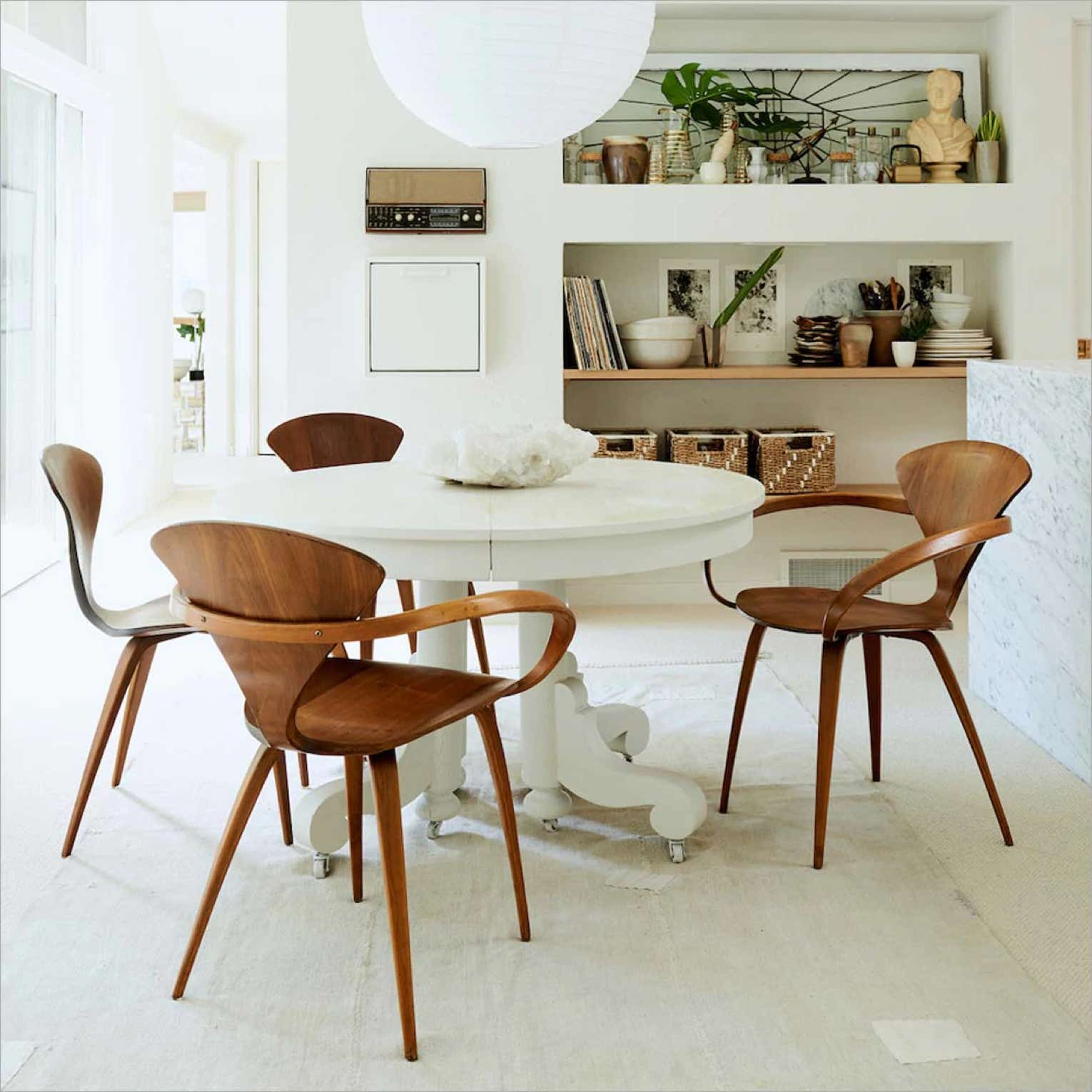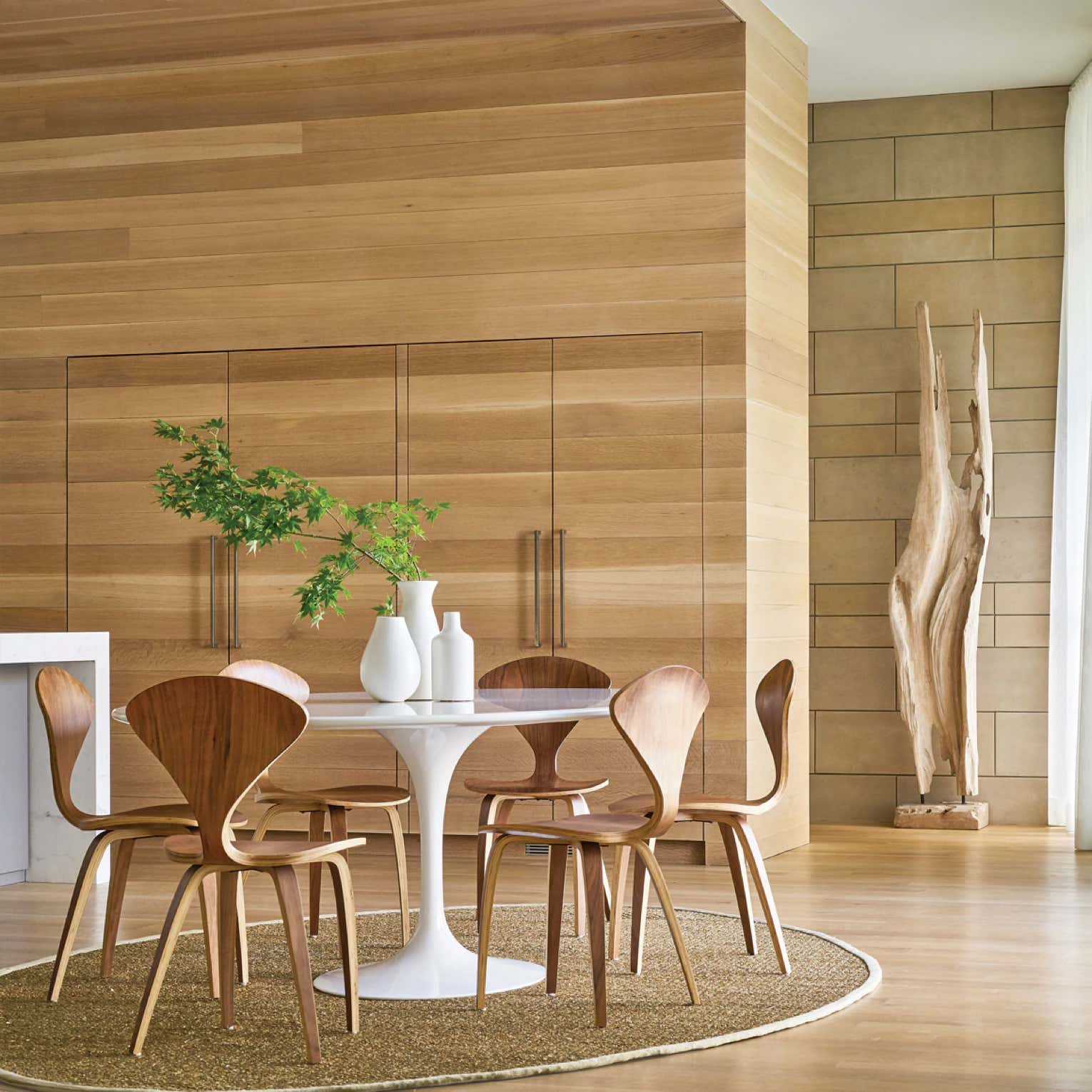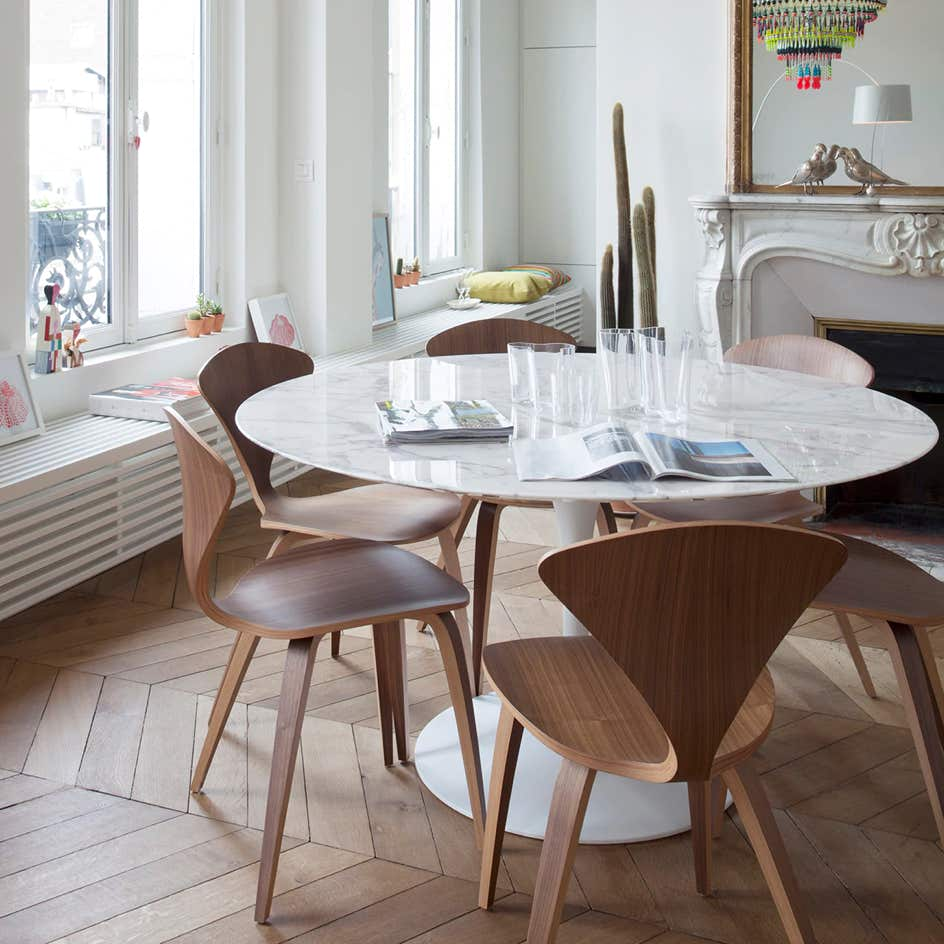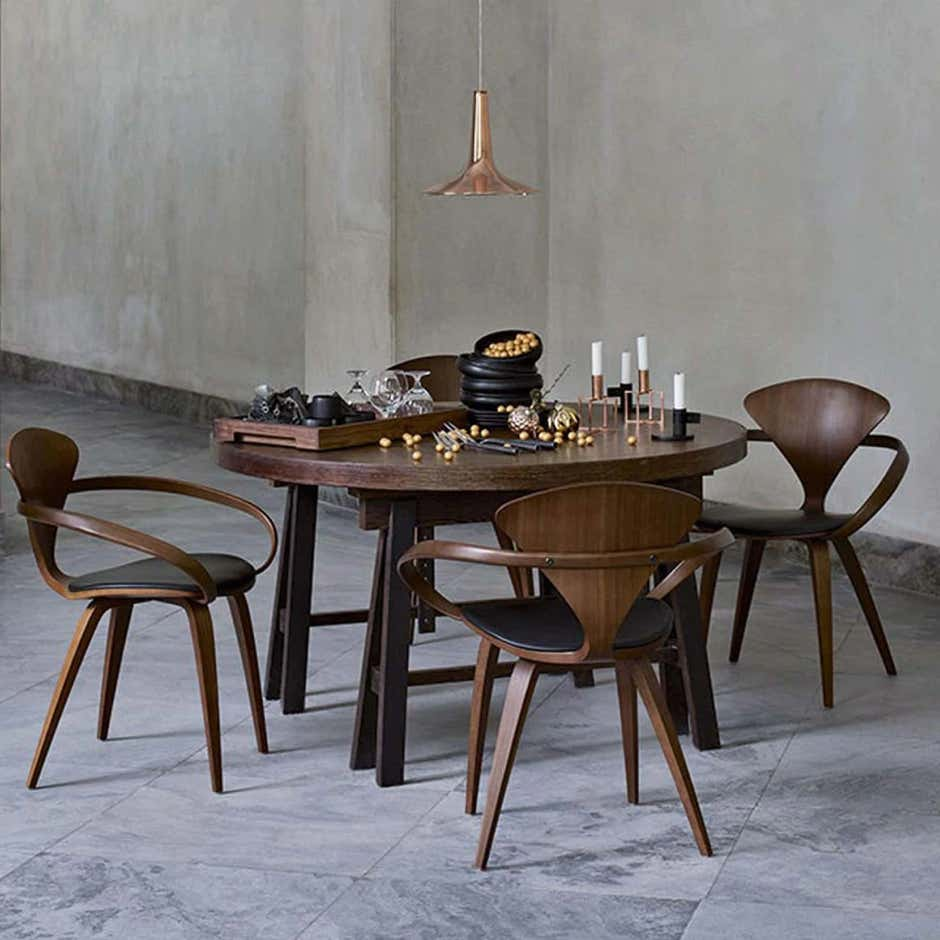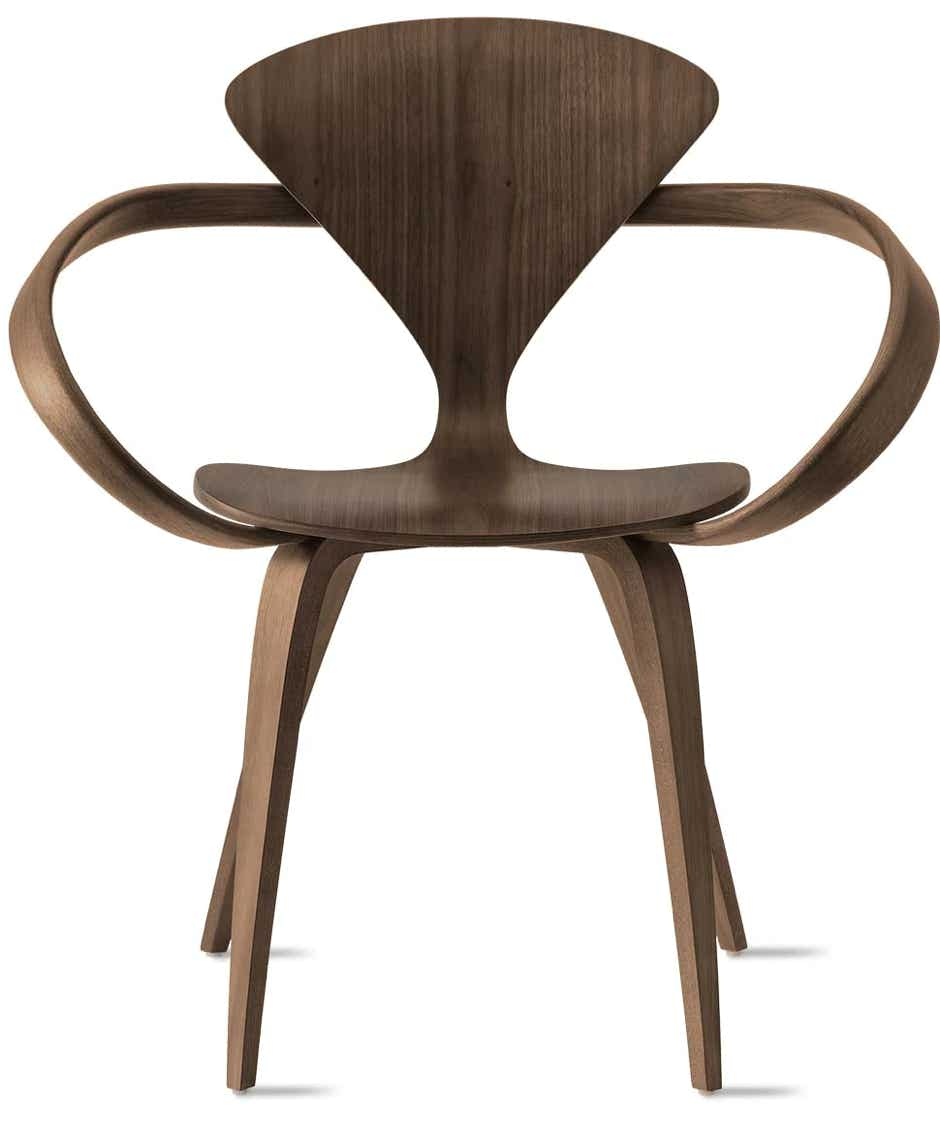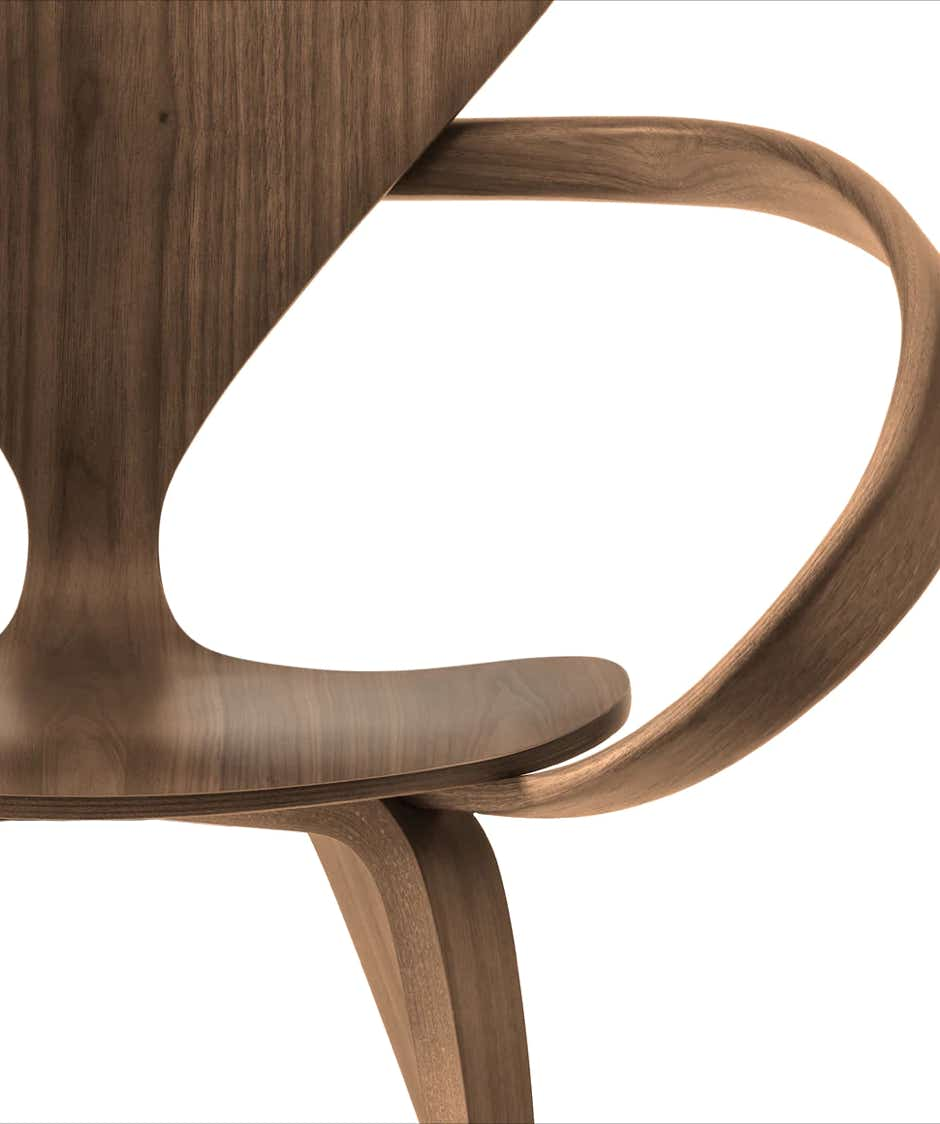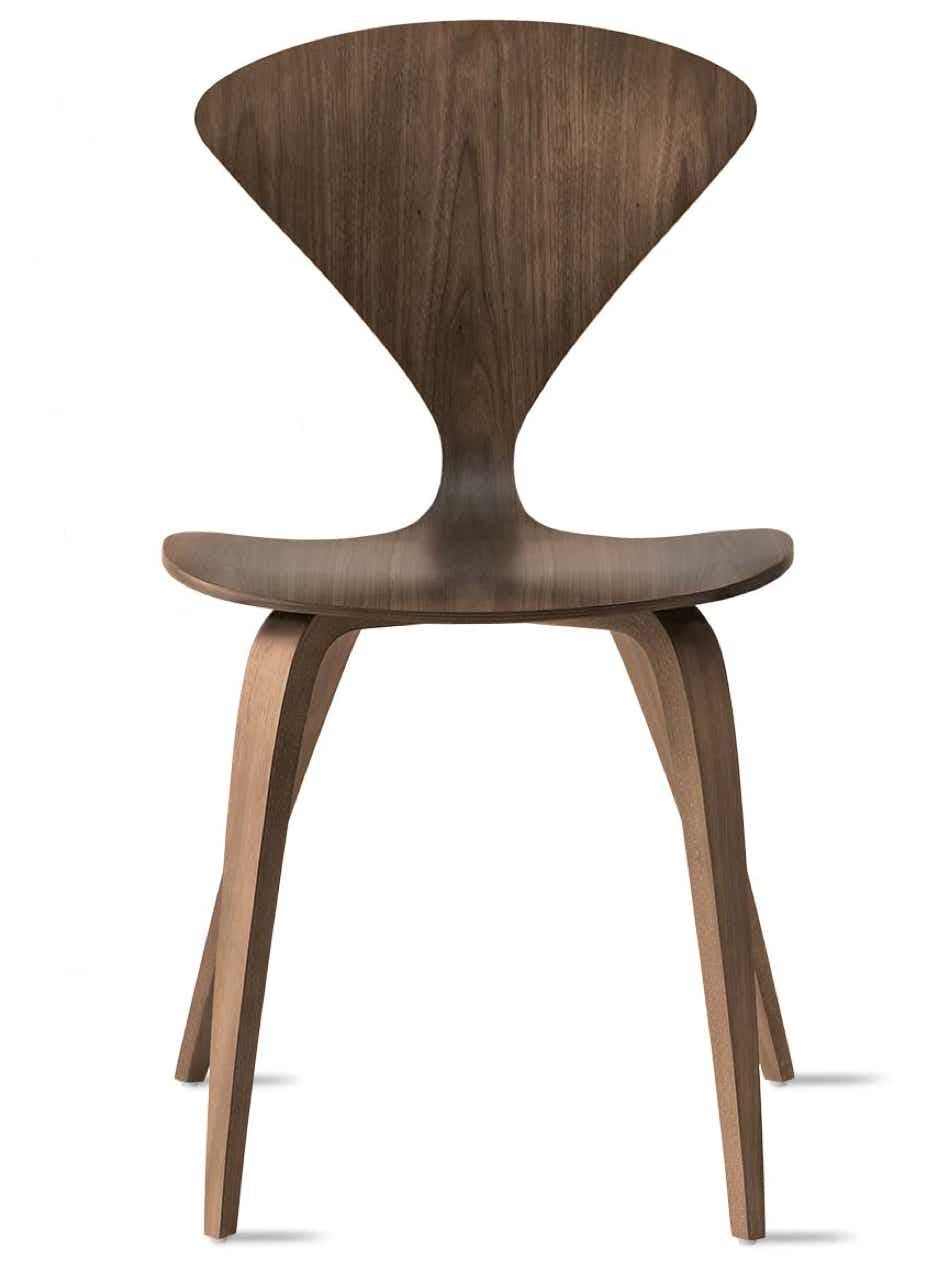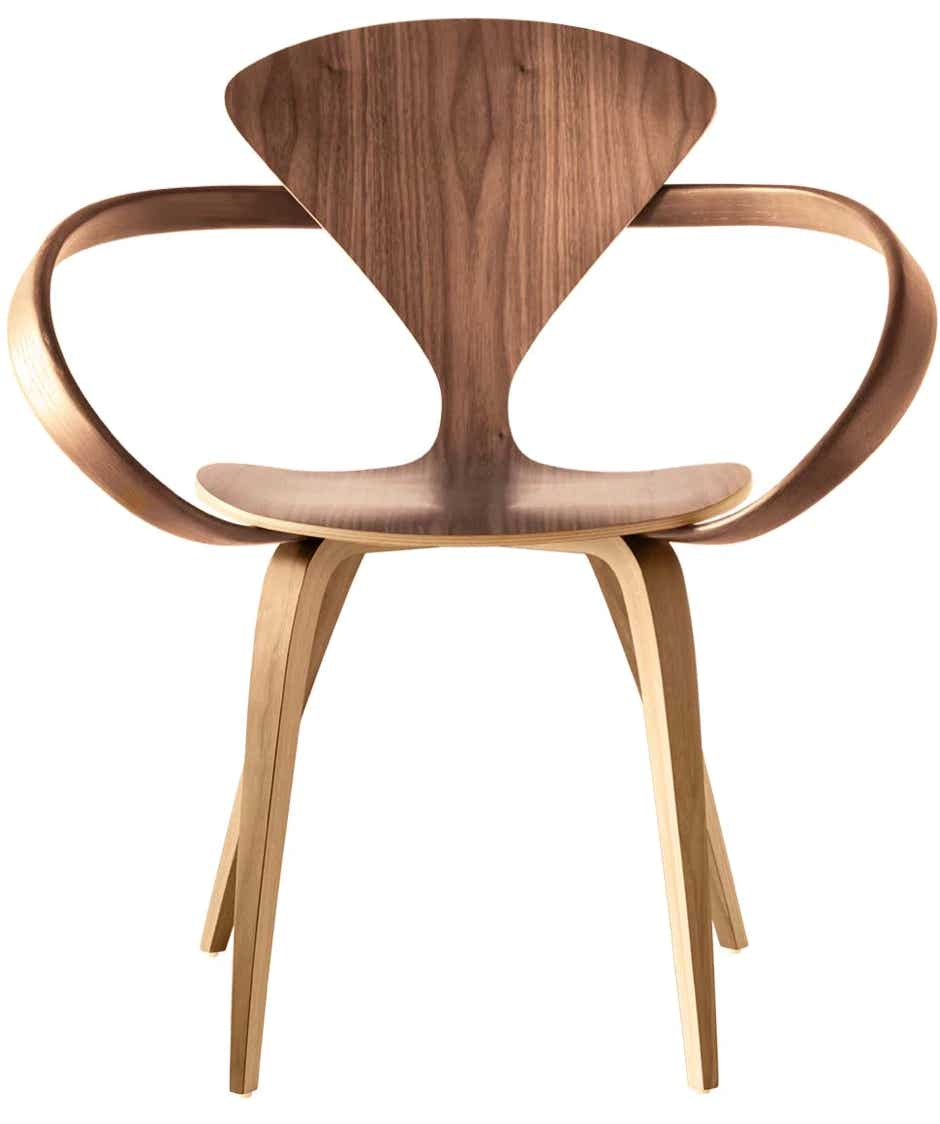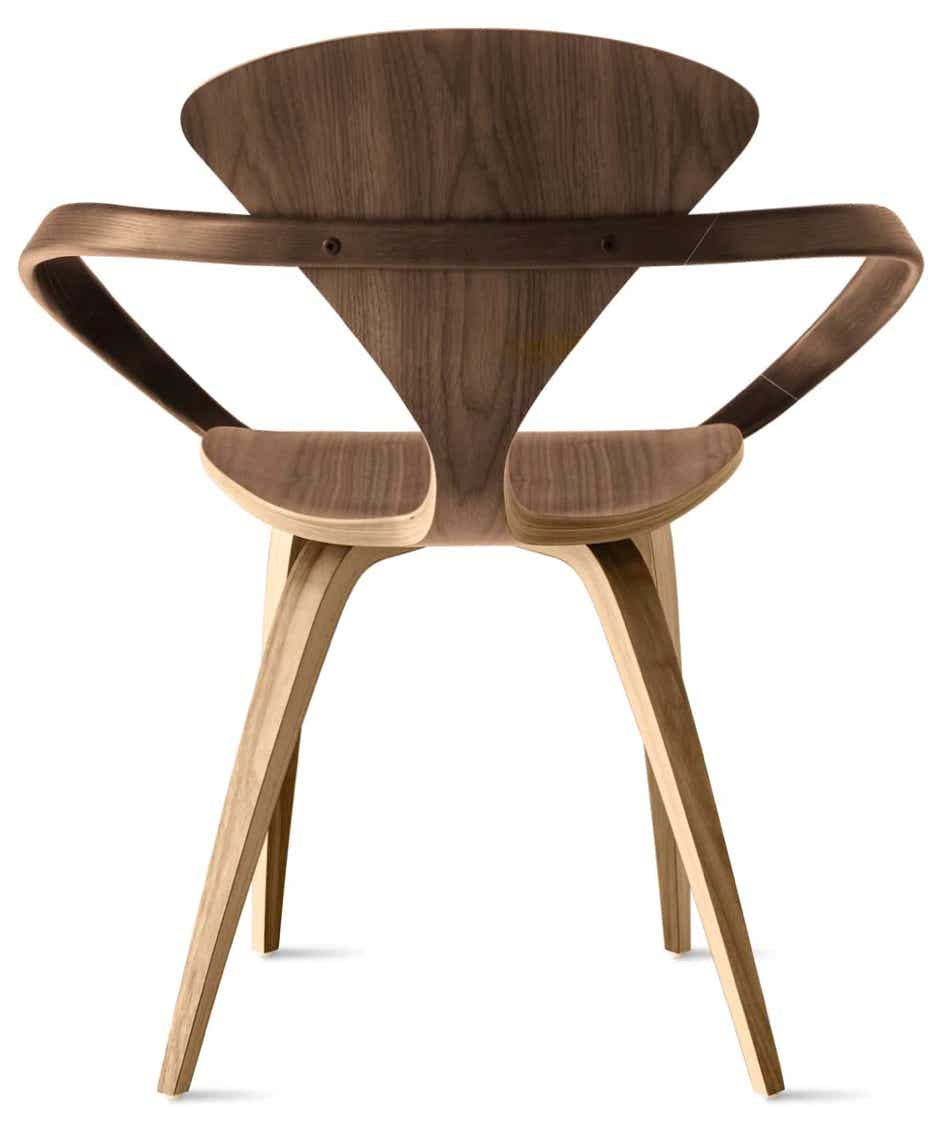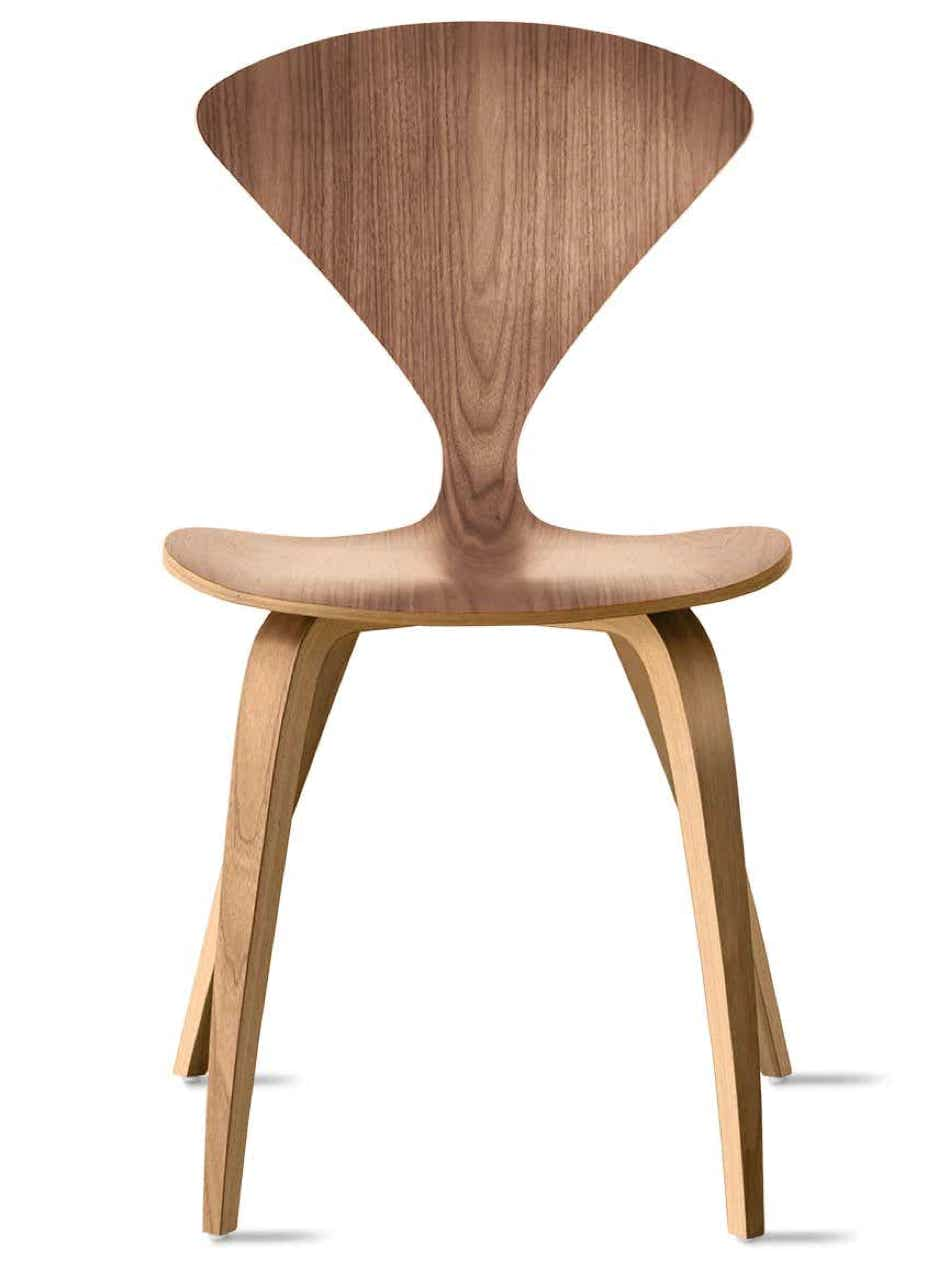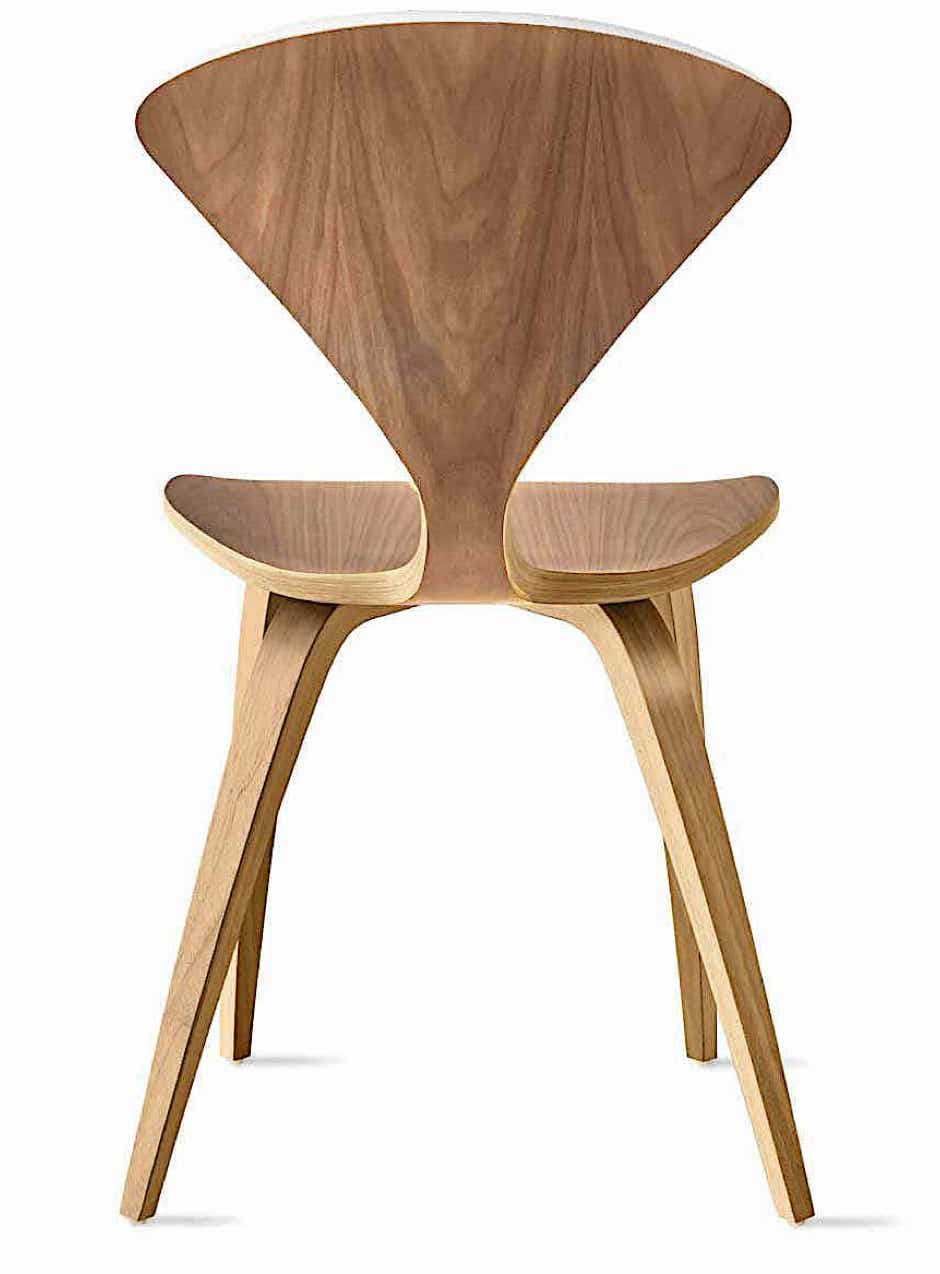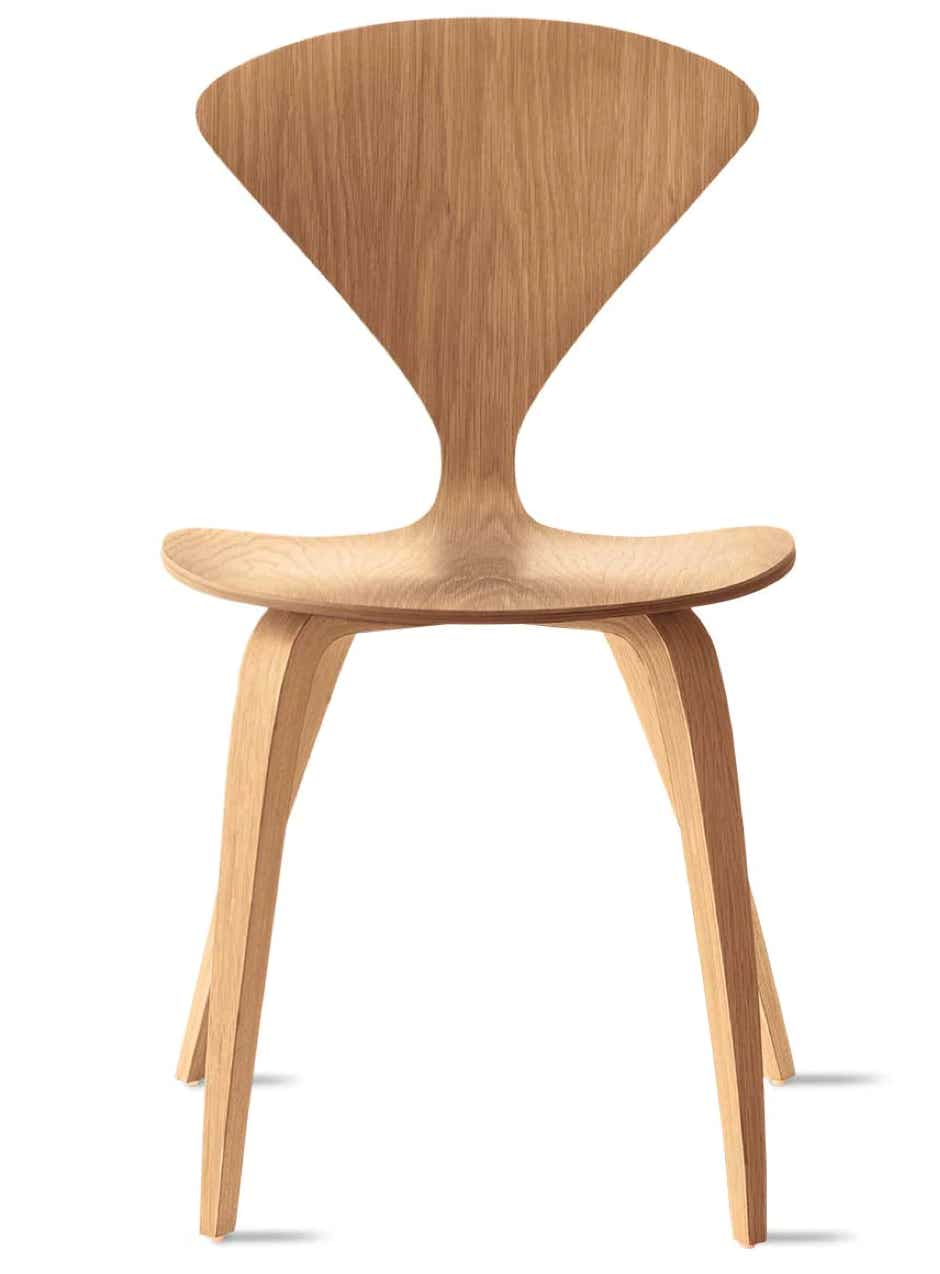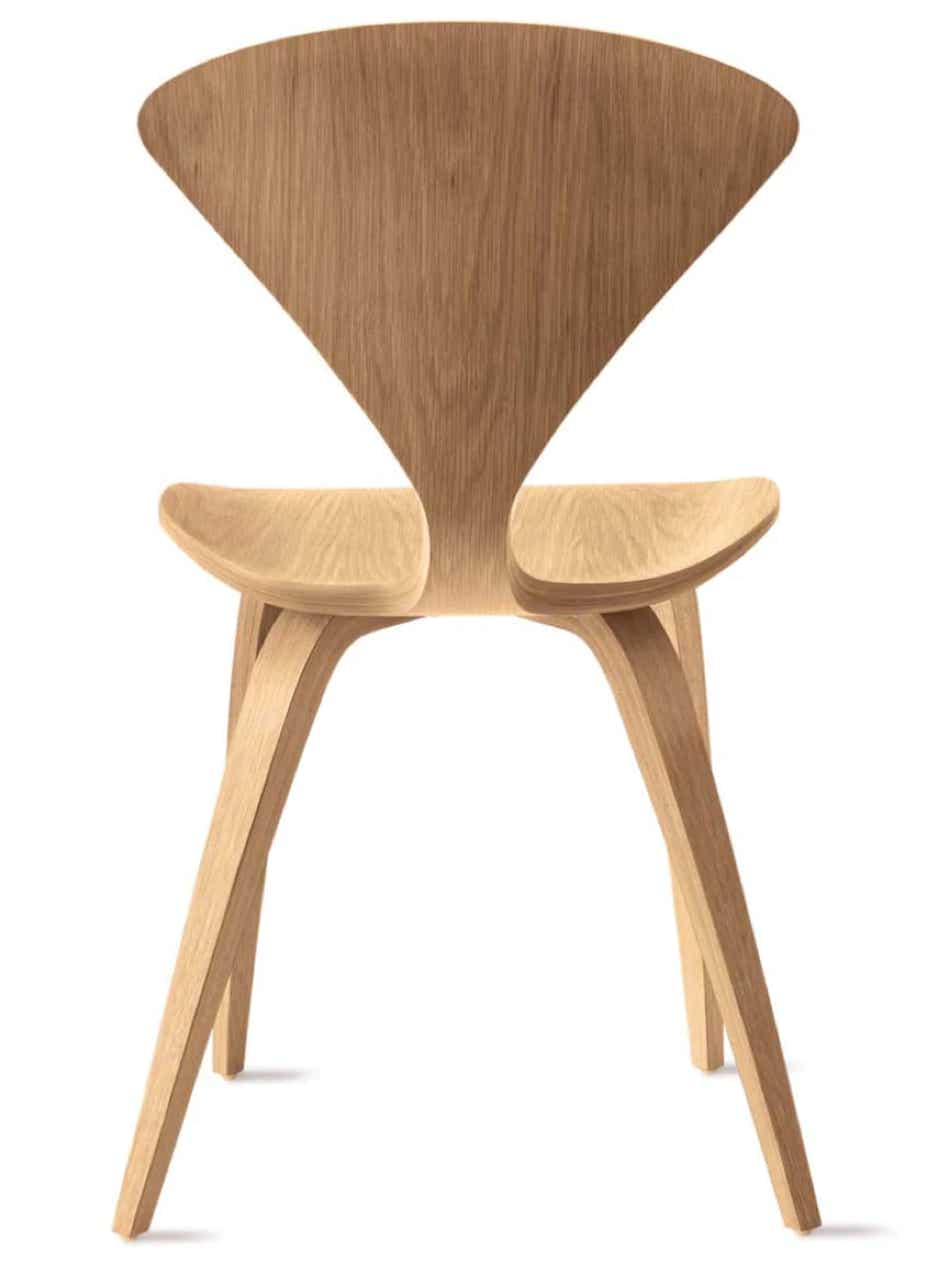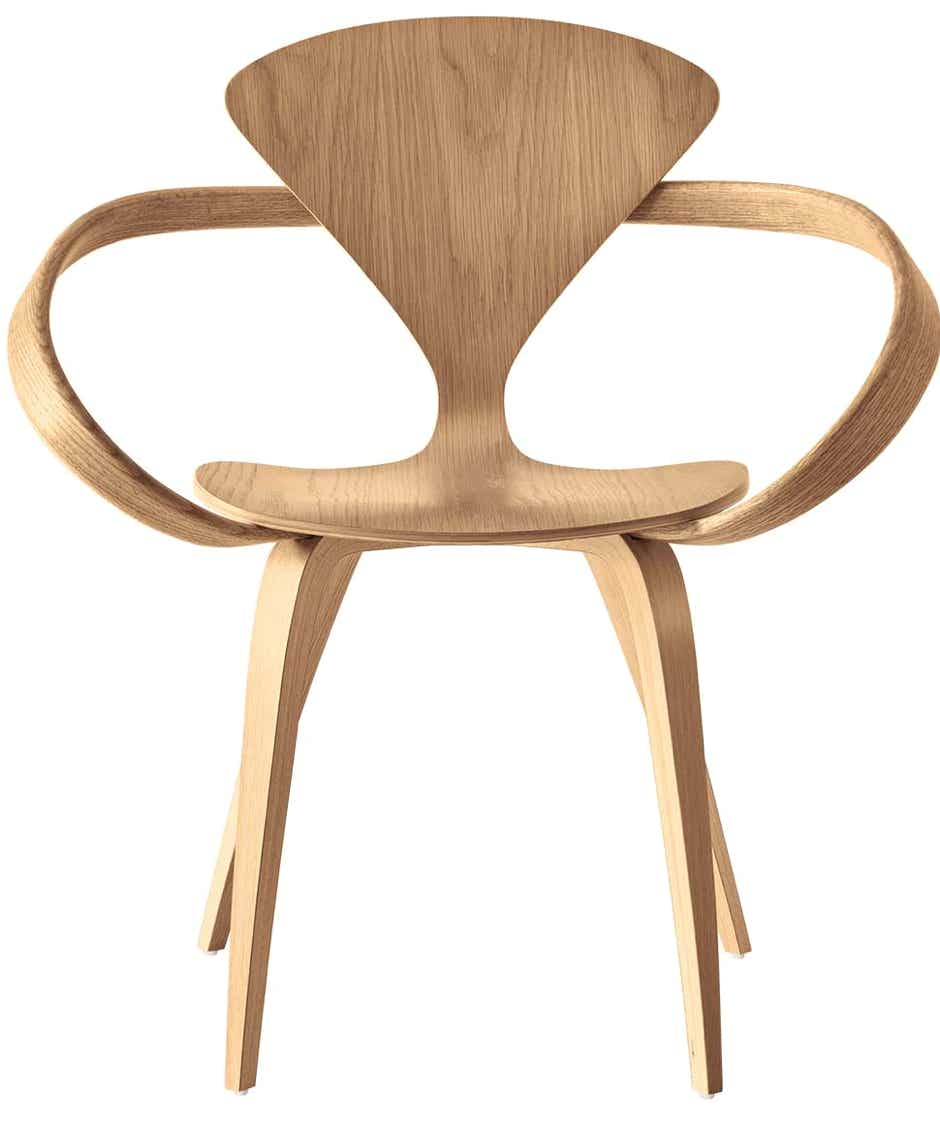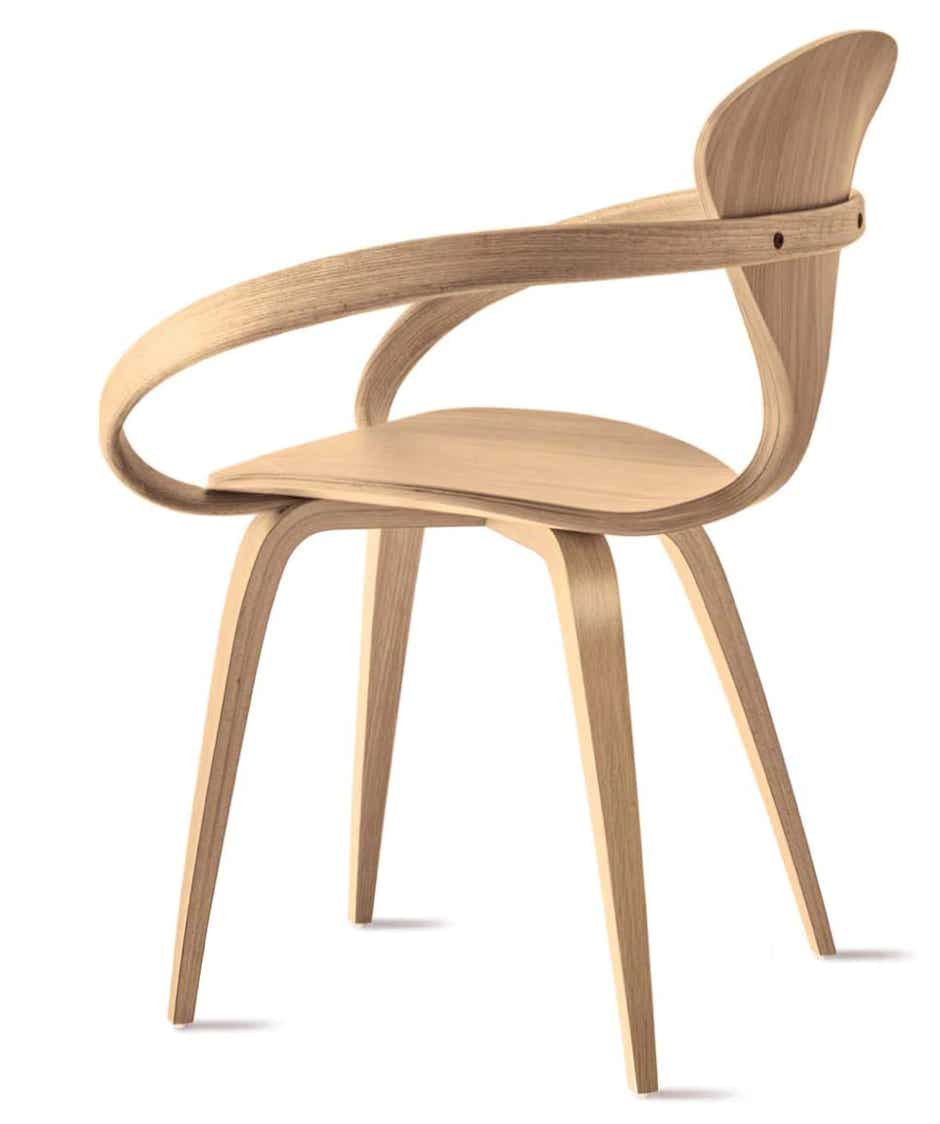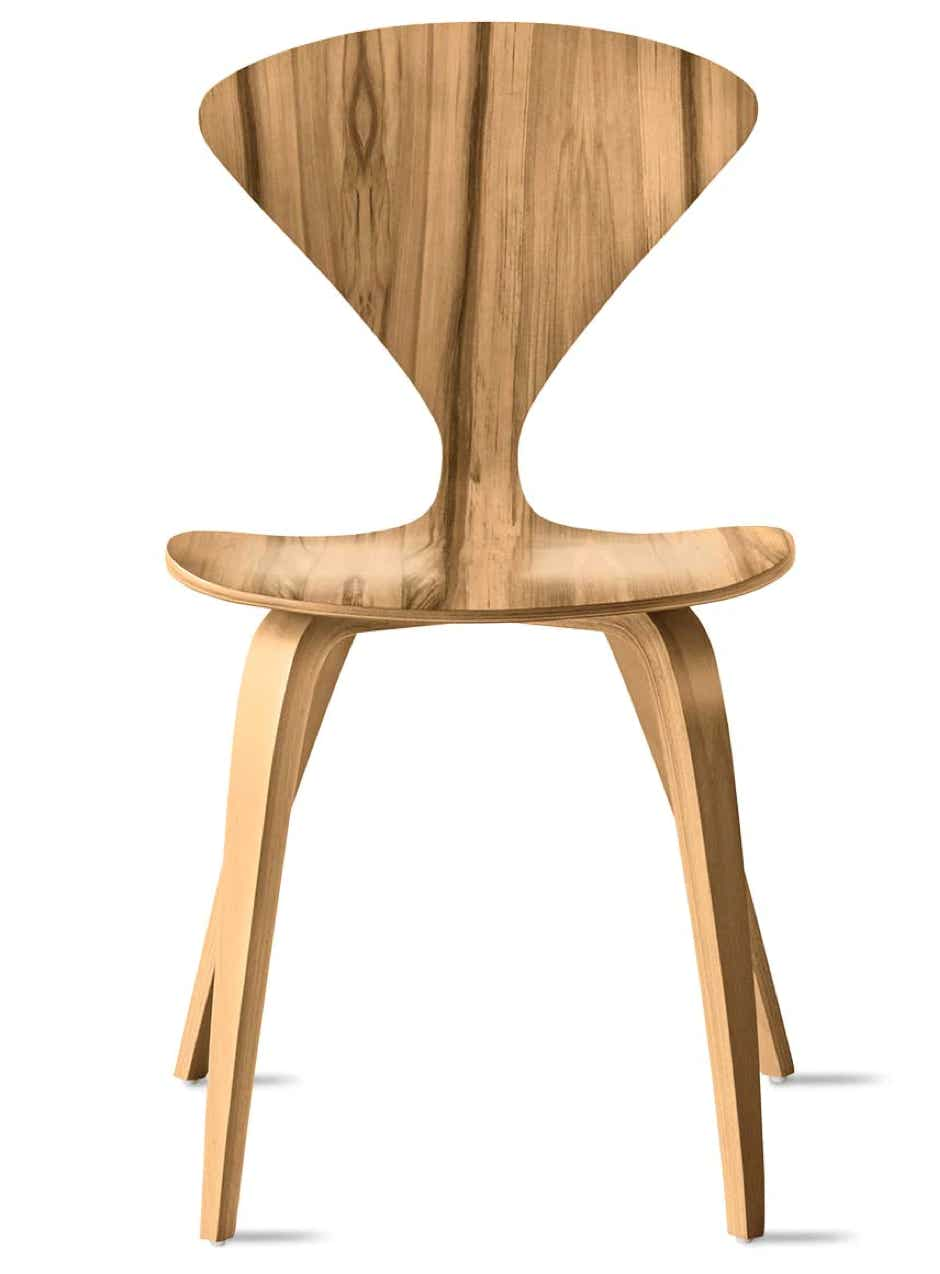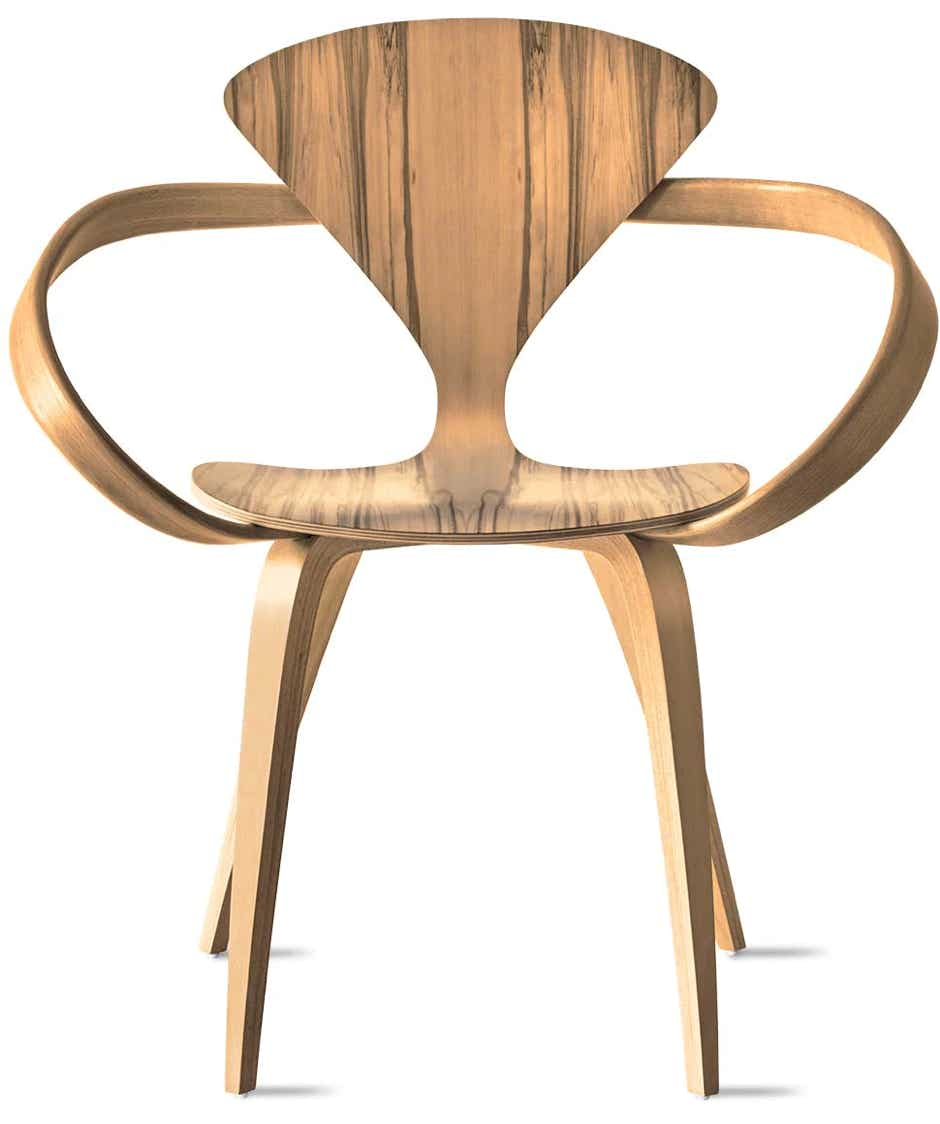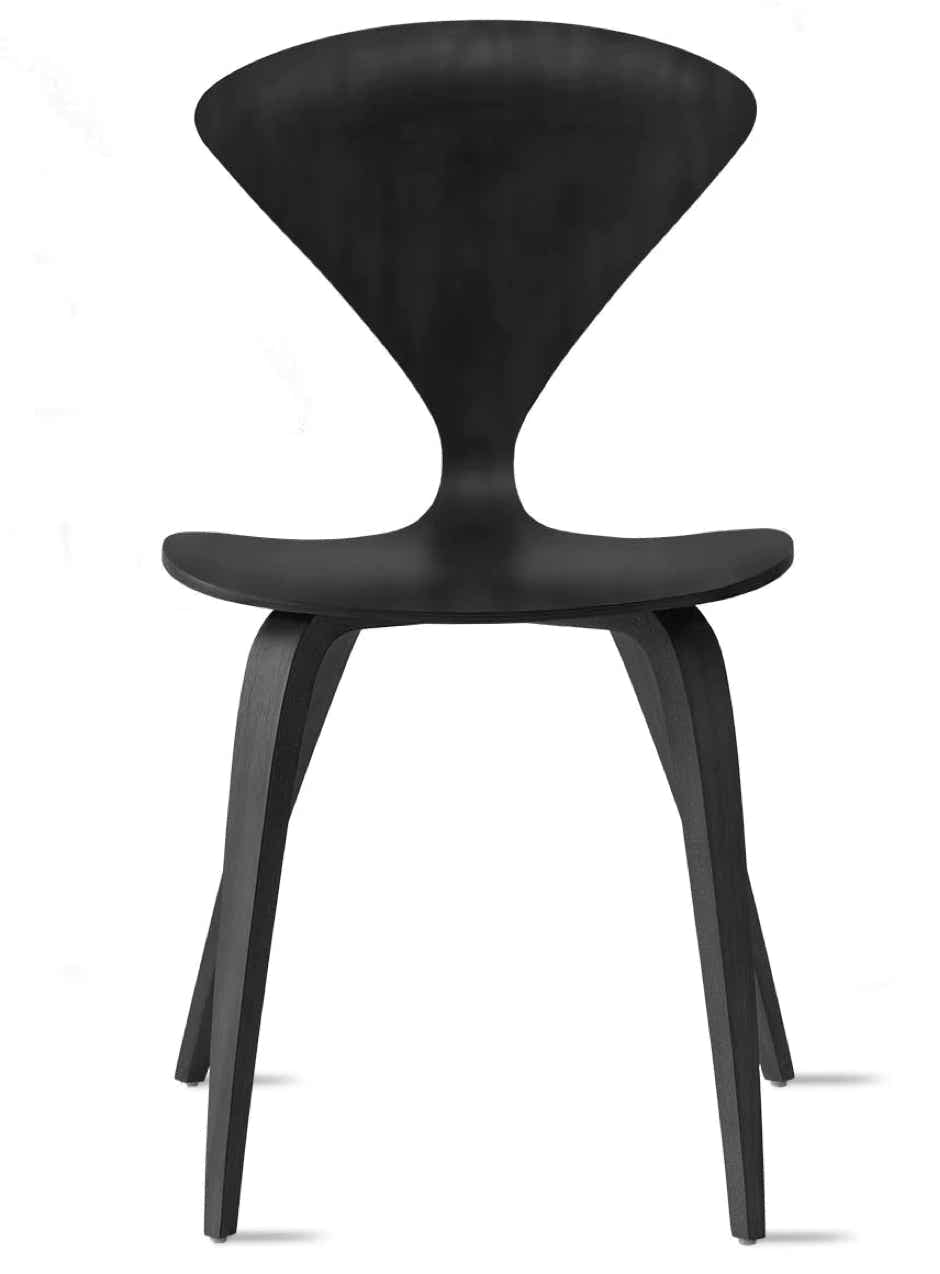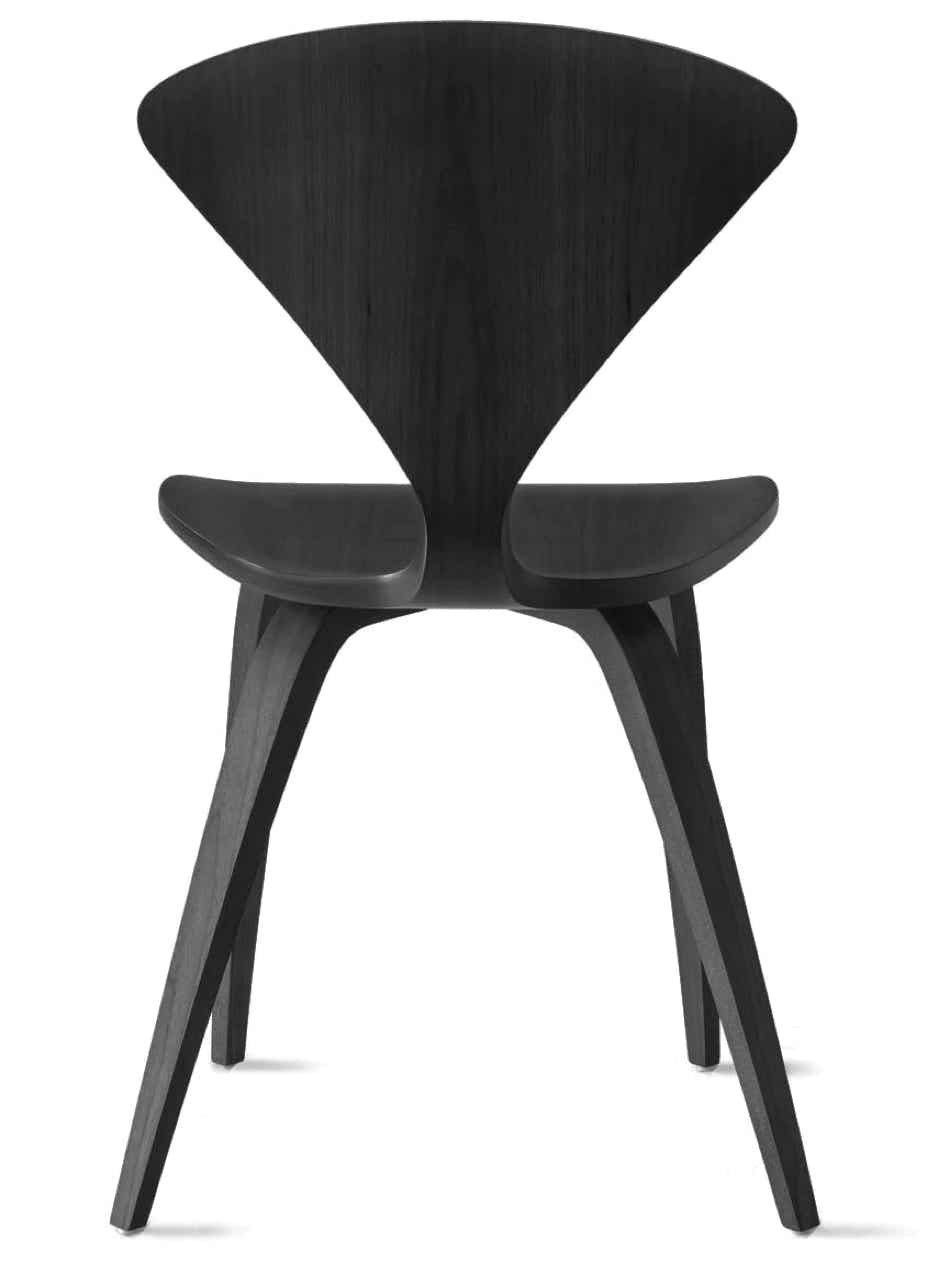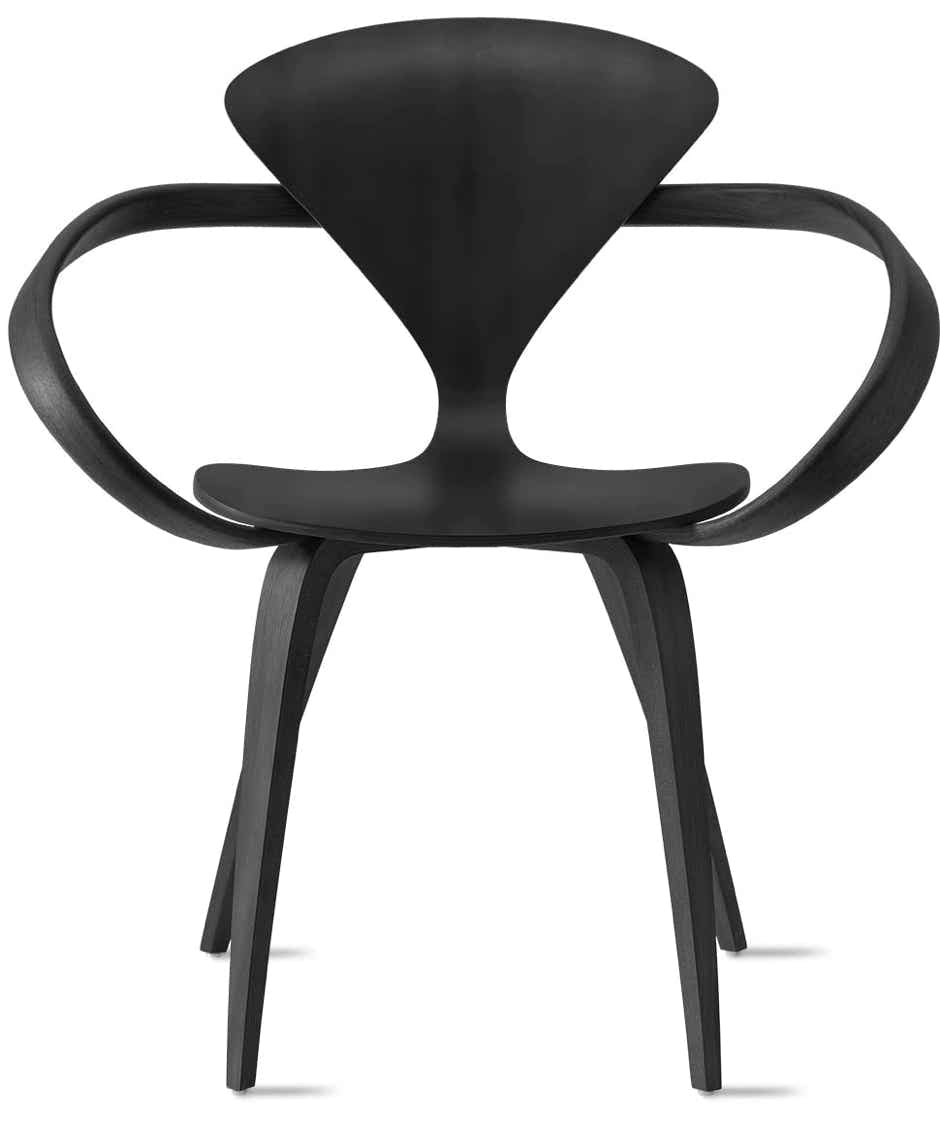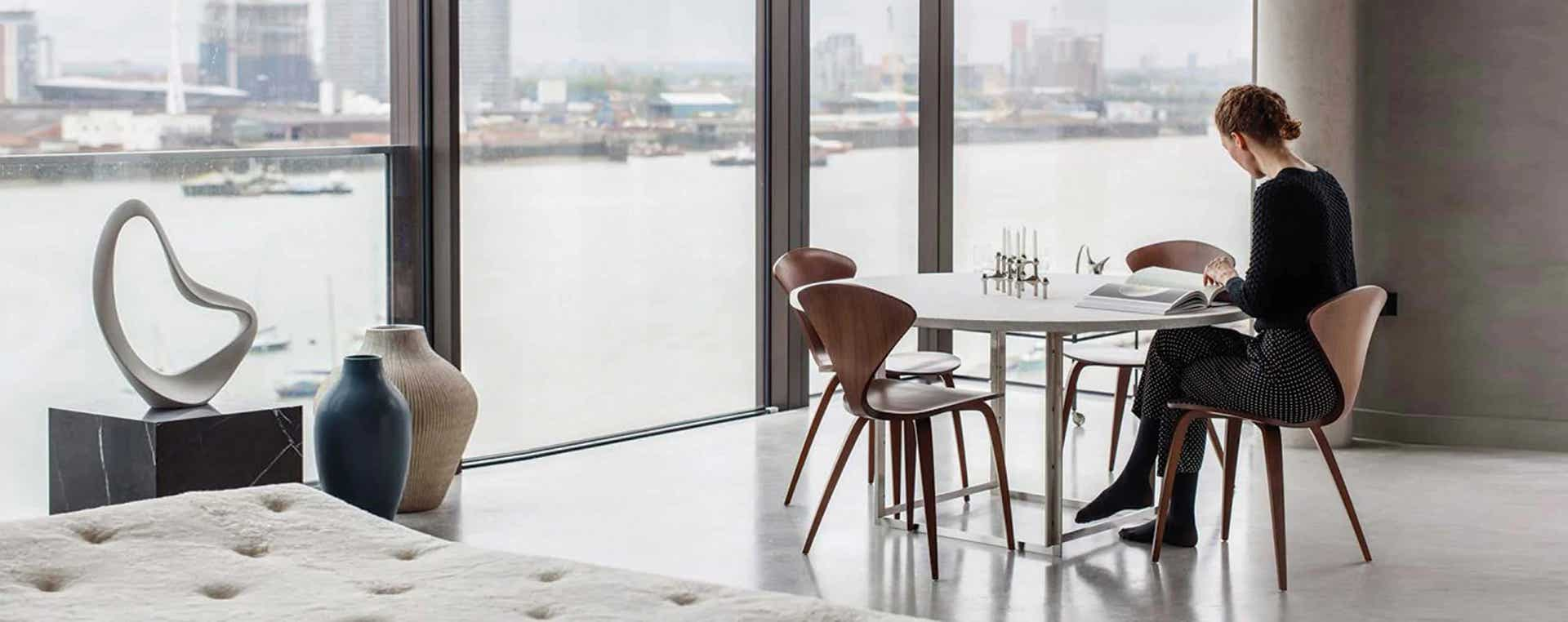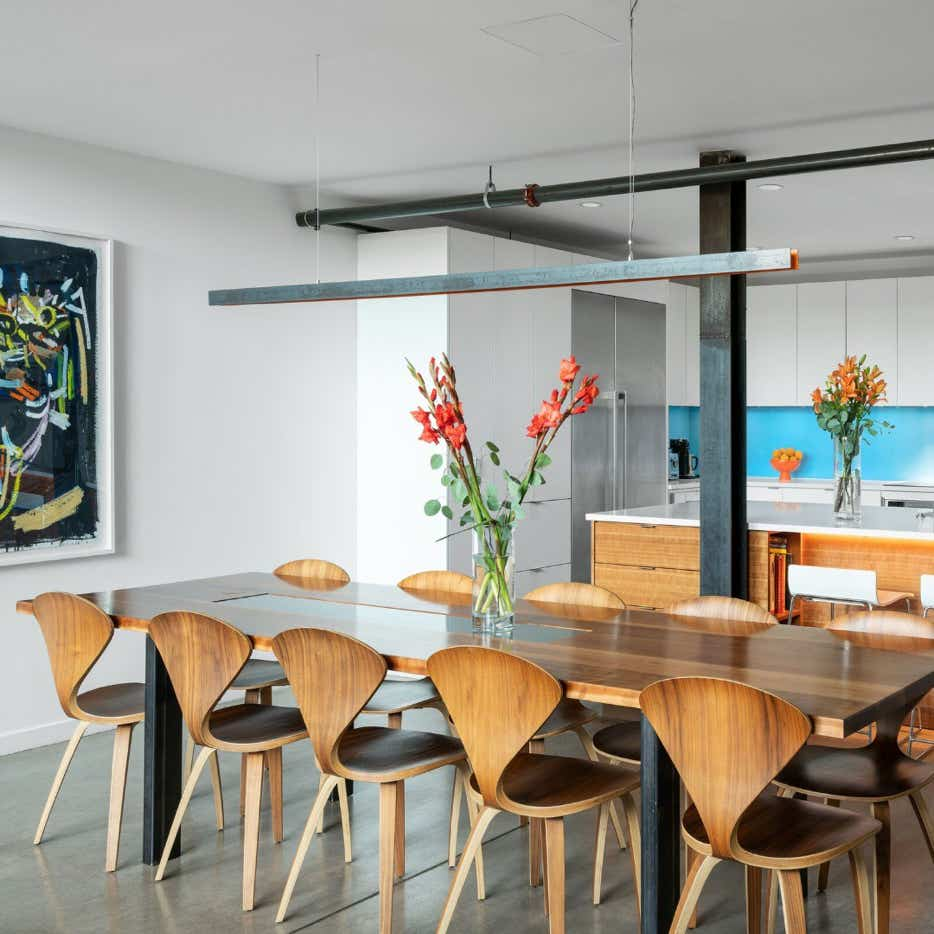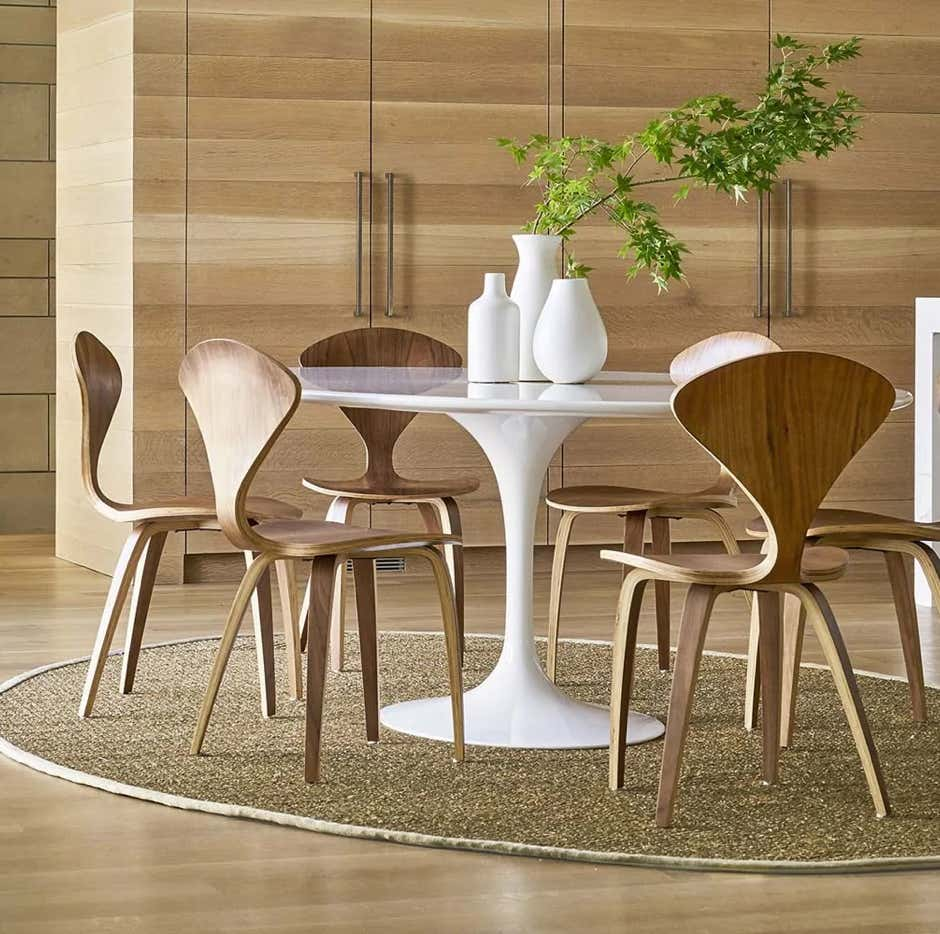
The Cherner Chair and Armchair are the most famous creations of Norman Cherner. Very confortable and resistant despite his visual lightness, the Cherner Chair and Armchair are available in a multitude of wood finishes that include 2 walnut versions: "natural walnut" and "Classical Walnut".
Natural walnut have a clear top coat where the natural variations in the color and the grain of the wood are clearly visible. No stain or color enhancements are used. Classical walnut use aniline dyes and water-based low VOC varnishes, wich produce a finish where the natural grain texture of the wood is clearly visible with uniform color through-out. The Cherner chair & armchair are available with a back or/and seat pad.
classic walnut
Cherner Armchair – Classic Walnut
Cherner Chair – Classic Walnut
natural walnut
Cherner Armchair – Natural Walnut
Cherner Chair – Natural Walnut
white oak
Cherner Chair – White oak
Cherner Armchair – White oak
natural red gum / beech
Cherner Chair – Natural Red Gum / Beech
Cherner Armchair – Natural Red Gum / Beech
classic ebony
Cherner Chair – Classic Ebony (wood grain visible)
Cherner Armchair – Classic Ebony (wood grain visible)
Norman Cherner

Norman Cherner was born in 1920 in the United States. He spent his formative years at the Fine Arts Department of Columbia University in New York. There, he learns in particular architecture according to the classical canons of the time, where noble materials must be put forward and brought to light by the architect. Above all, at the time, architecture as taught in universities was an art in the same way as painting or sculpture, and not an industry. Then, Norman Cherner taught in the same department, and worked at the Museum of Modern Art in New York (MoMA) between 1947 and 1949. There, he discovered the Bauhaus movement. Appearing in Germany, this movement considers architecture as a means of making the life of citizens easier and less expensive. The dictatorship of beauty for beauty's sake is over. For this, the Bauhaus explores the possibilities of new materials and new techniques brought about by chemical and physical progress. Norman Cherner totally recognizes himself in this manifesto. His career then took a new turn.
Influenced by the Bauhaus, Norman Cherner made it his mission to build a fully furnished prefabricated house at a low cost. For this, he uses the least noble materials, but the most practical: plastic and especially plywood which he will make a specialty of. In 1957, Norman Cherner built a prefabricated house for the United States Department of Housing. The work is exhibited in Vienna, Austria. Then, the house is dismantled, and crosses the Atlantic by boat to be reassembled in Connecticut where it serves as Norman Cherner's home and work studio. The manufacture of these prefabricated houses does not meet with commercial success. However, the designer gains international recognition. He did not give up his idea, however, and began to write a series of books to explain how to make his own furniture and house.



